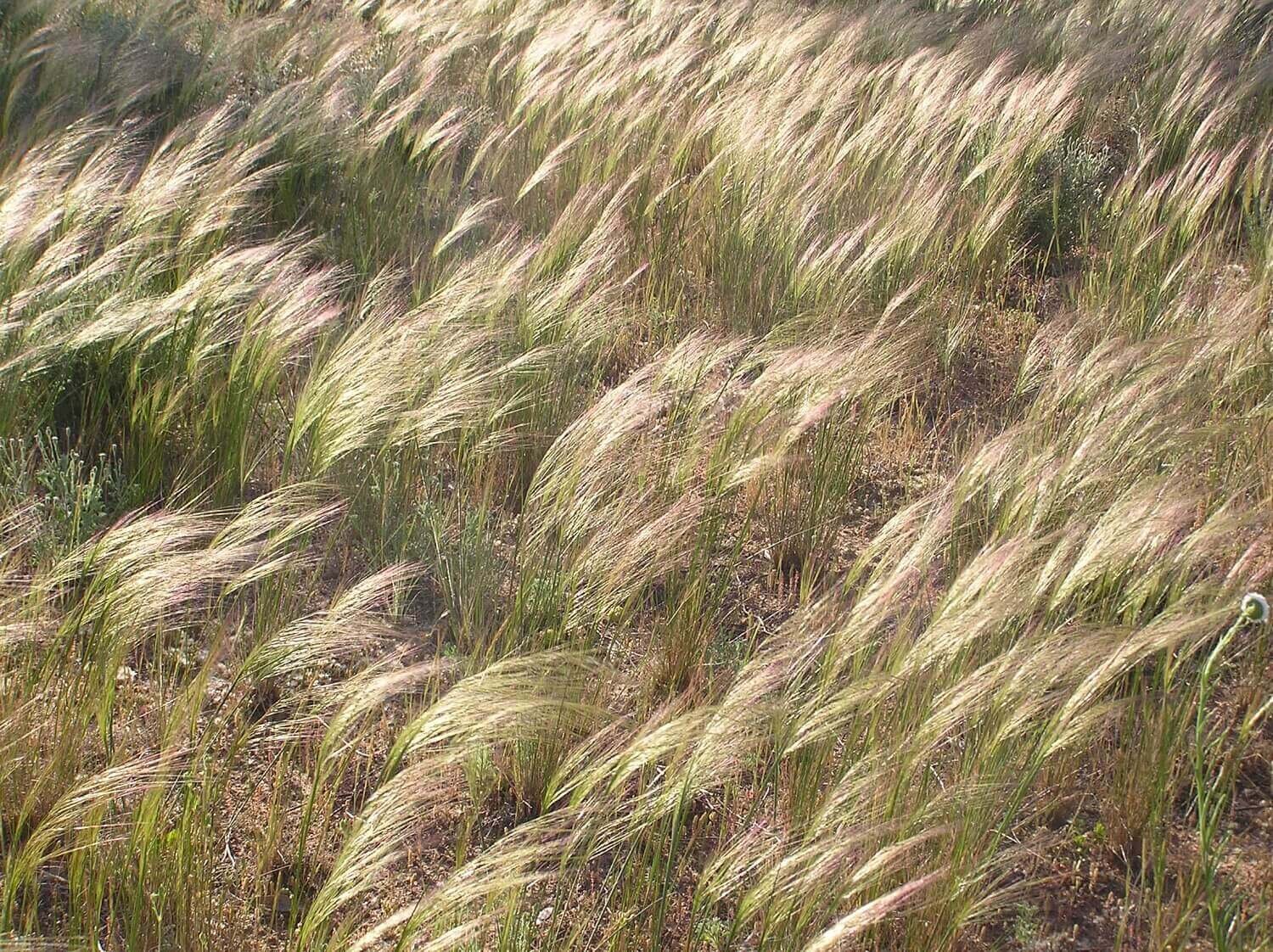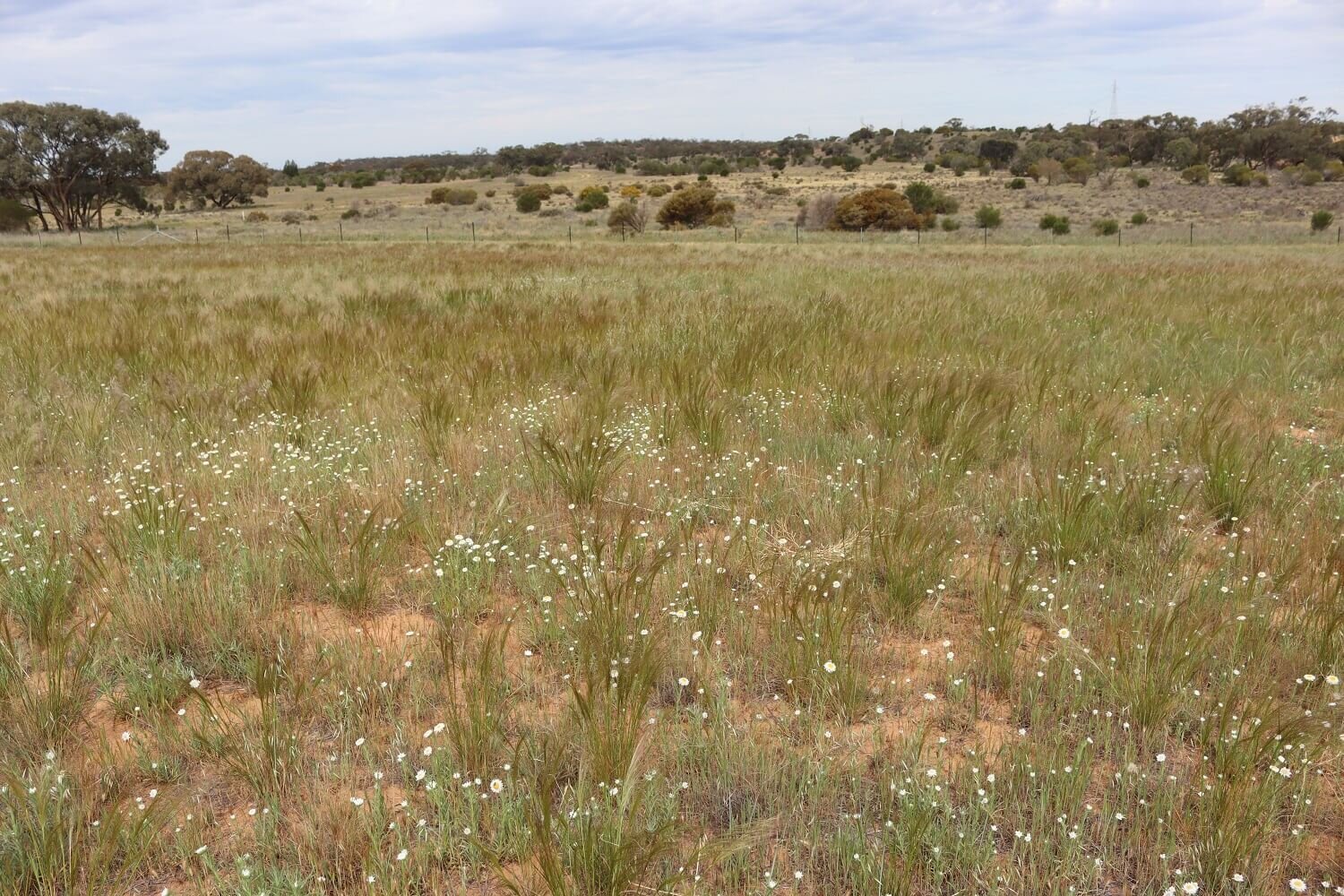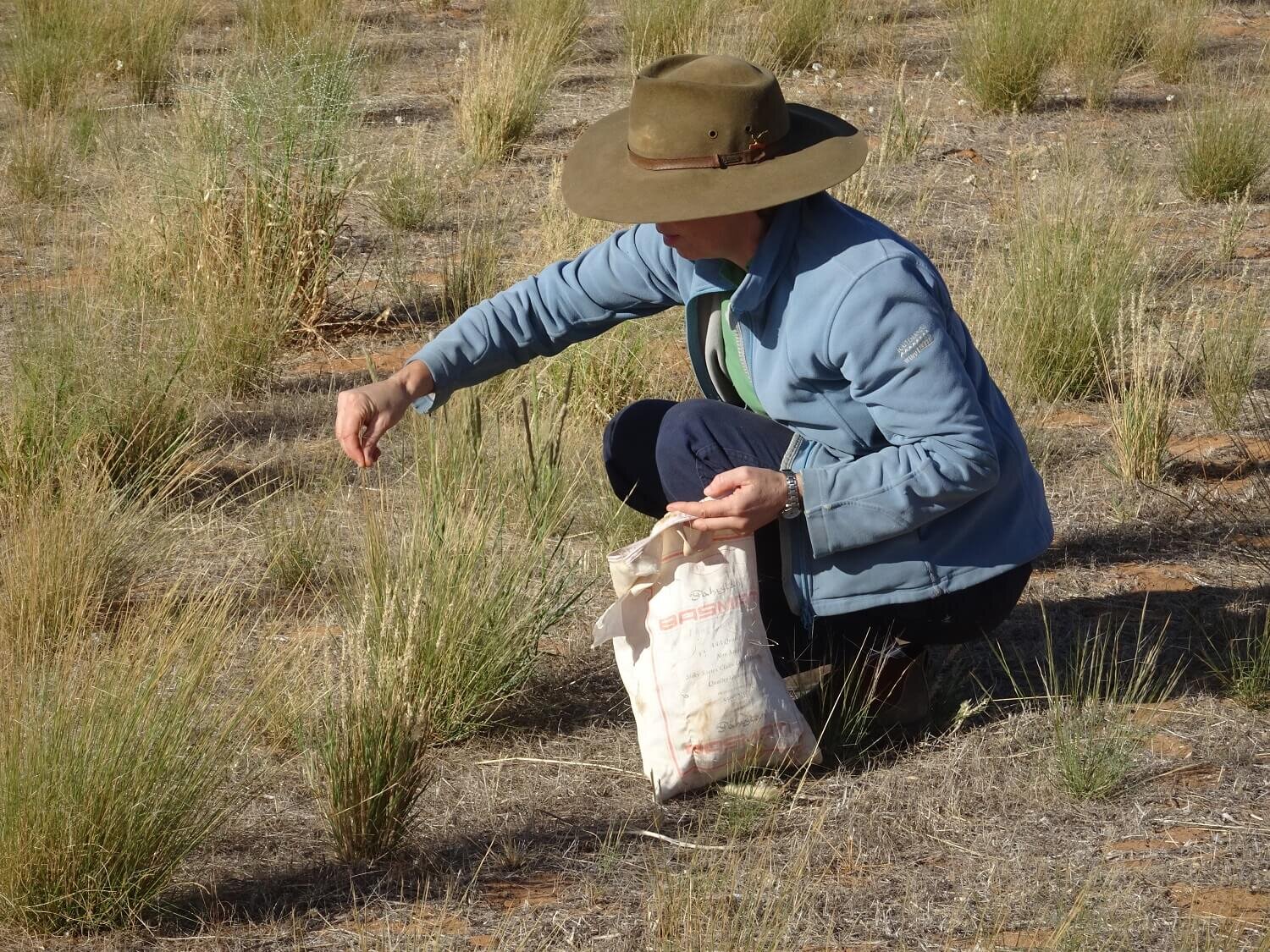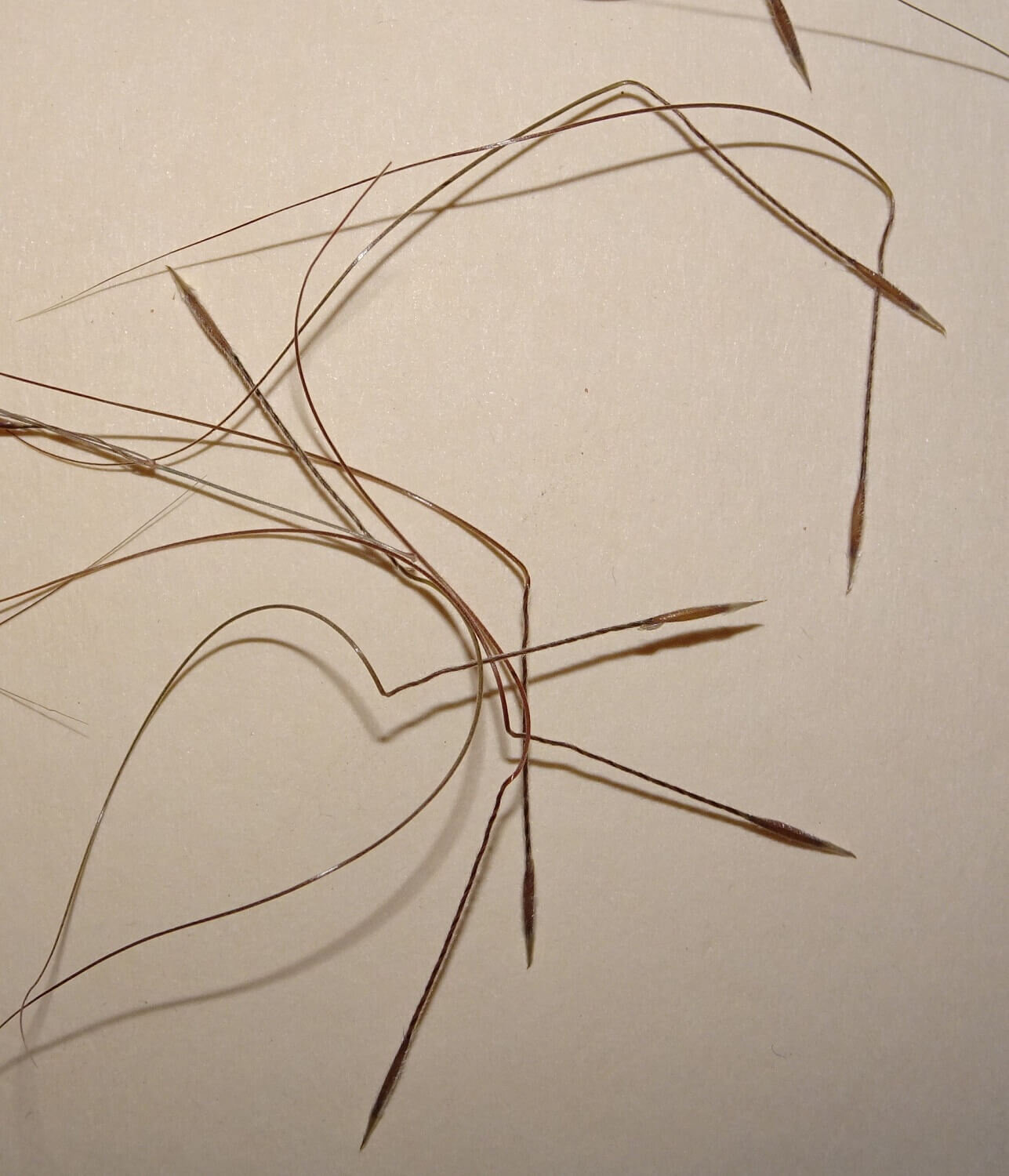Good years for Spear Grass
2020 was a good year for native grasses. We were at sea in an ocean of Spear Grass (Austrostipa spp.), complete with rolling waves …
2020 was our best Spear Grass year since 2014 so was a great year to replenish the soil seed bank and collect some seeds for revegetation. As an update, 2021 was pretty good too, and 2022 was astonishing. Waist high grass everywhere!
The areas where we have been able to keep grazing pressure from kangaroos low respond beautifully to Autumn / Winter rainfall. However, there's still only sparse cover of native grasses in areas where the grazing pressure from kangaroos is too high. (Update March 2022: we have completed our kangaroo fence so we can now keep grazing pressure low across the entire property!)
Our Spear Grasses are most Rough Spear Grass (Austrostipa scabra), Knotty Spear Grass (A. nodosa) and Balcarra Spear grass (A. nitida). However, I admit I am not great with grass taxonomy. If any grassland botanist wants to visit and assist with some identification - send us a note, please!
I love the Spear Grass when it is green and supple, but just wait until November as the seeds are ripening, and then I’ll be complaining. The awns twist into your socks, skin, the dog’s ears, and deep into the soil where they are supposed to be, waiting for the rain.
It is a cool adaptation - the seeds are self-planting. The awns (long bristly bits) are hygroscopic, meaning they absorb water. The hairs on the twisted awn base swell and shrink in response to soil moisture, and the seed is slowly twisted, head first, into the soil.
2020 reminded me that, even with climate change, not every year will be a bad year. The bush, with a little help from us, can recover from climate extremes. Our average annual rainfall is 300mm and we had almost no grass at all in 2018-2019 following dismal rainfall totals of 144mm in 2018 and 175mm in 2019. But in 2020 we had already had 179mm by September! Although the year’s total was only 281mm, importantly there was enough late Autumn and Winter rainfall for the Spear Grass to germinate and establish from the seed in the soil.
But 2022 was the best year yet, waist high Spear Grass in September 2022.
First published September 22, 2020. Updated 2021, 2022






